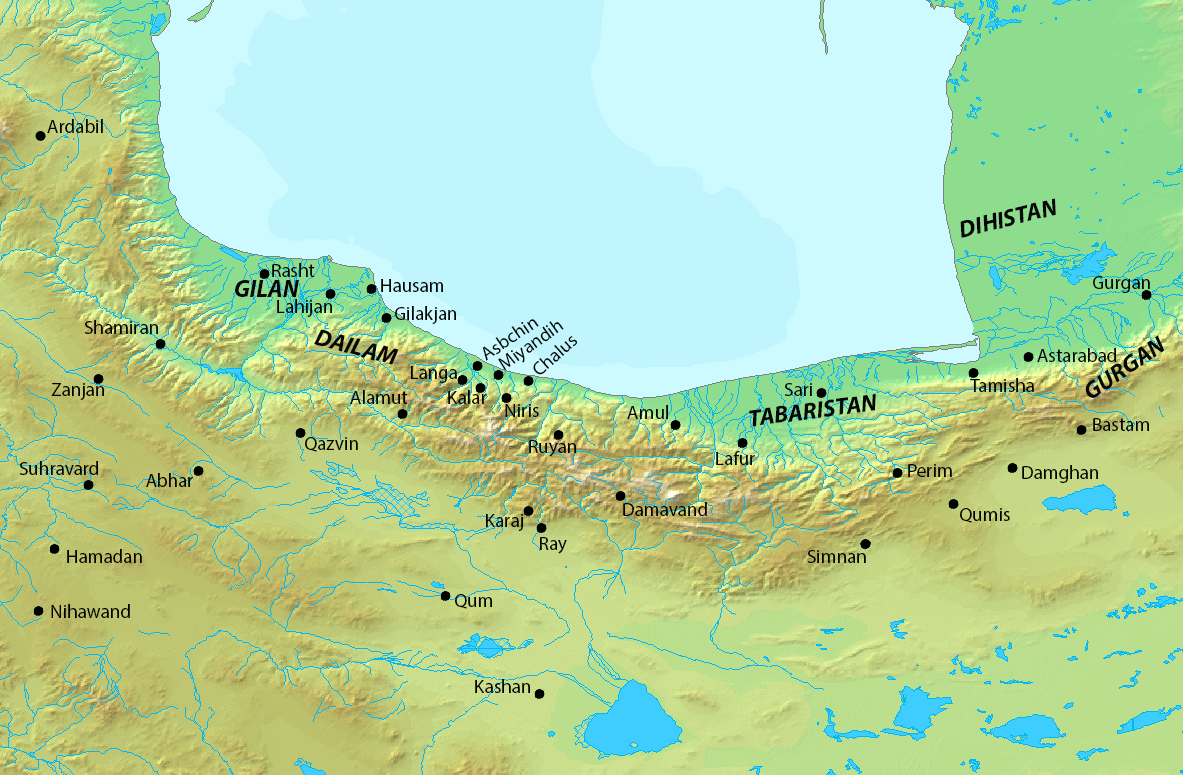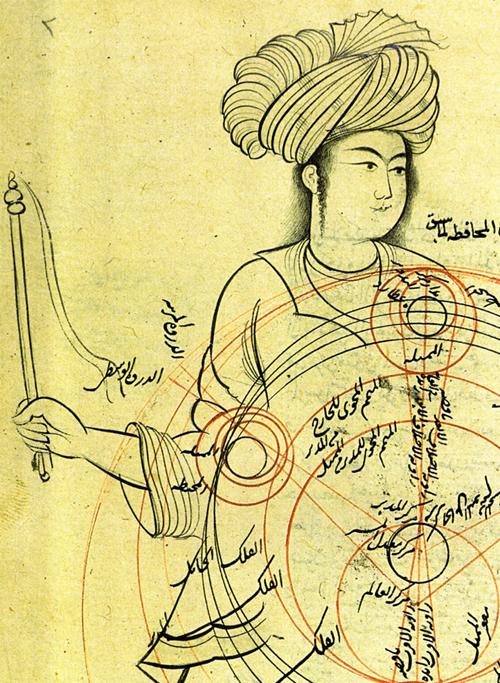|
Abu Al-Hasan Al-Tabari
Abu al-Hasan Ahmad ibn Muhammad al-Tabari, born in Amol, was a 10th-century Persian physician from Tabaristan. He was the physician of Rukn al-Dawla, a Buyid ruler. He was author of a compendium of medicine ''Kitab al-mu'alaja al-buqratiya'' (Hippocratic treatments), in ten books. It is extant only in Arabic language. Tabari has written valuable articles on different medical sciences; however, he is especially famous for authoring the al-Mu'alajat al-Buqratiya (Hippocratic Treatments) - an important medical encyclopedia. Several of Al-Tabari's succeeding scholars and physician have referred to the al-Mu'alajat al-Buqratiya in their medical articles. The aim of this study is further introduction of this great physician and assessment of his theories and key works. Sources * F. Wüstenfeld, ''Arabschen Aerzte'' (56, 1840). See also *Medicine in the medieval Islamic world *List of Iranian scientists The following is a list of Iranian scientists, engineers, and scholars who liv ... [...More Info...] [...Related Items...] OR: [Wikipedia] [Google] [Baidu] |
Amol
Amol ( ; ) is a city in the Central District (Amol County), Central District of Amol County, Mazandaran province, Mazandaran province, Iran, serving as capital of both the county and the district. Amol is located on the Haraz River bank. It is situated less than south of the Caspian Sea and less than north of the Alborz mountains. It is northeast of Tehran, and west of the provincial capital, Sari, Iran, Sari. It is one of the oldest cities in Iran, and a historic city, with its foundation dating back to the Amardi tribe, who inhabited the region in the Iron Age. Amol is the center of industry and culture of Mazandaran, the rice capital of Iran, and one of the most important cities of the transportation, agriculture, and tourism industries in Iran. It is known as the ''History, Science and Philosophy city'', ''City that does not die'' and ''Hezar Sangar city''. History Pre-Islamic era According to the city government, the name is derived from ''Amardi'', a tribe mentioned ... [...More Info...] [...Related Items...] OR: [Wikipedia] [Google] [Baidu] |
Persians
Persians ( ), or the Persian people (), are an Iranian ethnic group from West Asia that came from an earlier group called the Proto-Iranians, which likely split from the Indo-Iranians in 1800 BCE from either Afghanistan or Central Asia. They are indigenous to the Iranian plateau and comprise the majority of the population of Iran.Iran Census Results 2016 United Nations Alongside having a common cultural system, they are native speakers of the and of the |
Tabaristan
Tabaristan or Tabarestan (; ; from , ), was a mountainous region located on the Caspian coast of northern Iran. It corresponded to the present-day province of Mazandaran, which became the predominant name of the area from the 11th-century onwards. History Pre-Islamic era Tabaristan was named after the Tapurians, who had been deported there from Parthia by the Parthian king Phraates I (). At the advent of the Sasanians, the region, along with Gilan and Daylam, was part of the Padishkhwargar kingdom of king Gushnasp, who is mentioned in the Letter of Tansar. He submitted to the first Sasanian King of Kings () Ardashir I () after being guaranteed to keep his kingdom. His line would continue ruling Padishkhwargar until the second reign of Kavad I (), who removed the dynasty from power and appointed his son Kawus in its stead. Under the Sasanians, Tabaristan enjoyed considerable autonomy. They most likely left most of the affairs to the locals. The mint signature of "AM" is ... [...More Info...] [...Related Items...] OR: [Wikipedia] [Google] [Baidu] |
Rukn Al-Dawla
Hasan (died September 976), better known by his ''laqab'' as Rukn al-Dawla ( Persian: رکنالدوله دیلمی), was the first Buyid amir of northern and central Iran (c. 935–976). He was the son of Buya. Struggle for power Hasan was the son of Buya, a Dailamite fisherman from Lahijan, who left his Zoroastrian faith and converted to Islam. Hasan had an older brother named 'Ali and a younger brother named Ahmad. He also had a sister named Kama. In around 928, Hasan's brother 'Ali joined the services of Makan, who was the Samanid governor of Ray. 'Ali then managed to gain military positions for Hasan and their other brother Ahmad. At the time, Hasan was about thirty years old. When Makan attacked his Samanid overlords and was subsequently defeated by the Ziyarid prince Mardavij, the brothers transferred their allegiance to the latter. In the following years, 'Ali repudiated his subservience to Mardavij and, after some time, managed to create an empire in Fars. Du ... [...More Info...] [...Related Items...] OR: [Wikipedia] [Google] [Baidu] |
Buyid
The Buyid dynasty or Buyid Empire was a Zaydi and later Twelver Shi'a dynasty of Daylamite origin. Founded by Imad al-Dawla, they mainly ruled over central and southern Iran and Iraq from 934 to 1062. Coupled with the rise of other Iranian dynasties in the region, the approximate century of Buyid rule represents the period in Iranian history sometimes called the Iranian Intermezzo. The Buyid dynasty was founded by Ali ibn Buya, who in 934 conquered Fars and made Shiraz his capital. He received the ''laqab'' or honorific title of ''Imad al-Dawla'' (). His younger brother, Hasan ibn Buya () conquered parts of Jibal in the late 930s, and by 943 managed to capture Ray, which he made his capital. Hasan was given the ''laqab'' of ''Rukn al-Dawla'' (). In 945, the youngest brother, Ahmad ibn Buya, conquered Iraq and made Baghdad his capital. He was given the laqab Mu'izz al-Dawla. As Iranians of Daylamite provenance, the Buyids consciously revived symbols and practices of the Sas ... [...More Info...] [...Related Items...] OR: [Wikipedia] [Google] [Baidu] |
Hippocrates
Hippocrates of Kos (; ; ), also known as Hippocrates II, was a Greek physician and philosopher of the Classical Greece, classical period who is considered one of the most outstanding figures in the history of medicine. He is traditionally referred to as the "Father of Medicine" in recognition of his lasting contributions to the field, such as the use of prognosis and clinical observation, the systematic categorization of diseases, and the (however misguided) formulation of Humorism, humoral theory. His studies set out the basic ideas of modern-day specialties, including surgery, urology, neurology, acute medicine and Orthopedic surgery, orthopedics. The Hippocratic school of medicine revolutionized ancient Greek medicine, establishing it as a discipline distinct from other fields with which it had traditionally been associated (theurgy and philosophy), thus establishing medicine as a profession. However, the achievements of the writers of the Hippocratic Corpus, the practitioners ... [...More Info...] [...Related Items...] OR: [Wikipedia] [Google] [Baidu] |
Arabic Language
Arabic (, , or , ) is a Central Semitic languages, Central Semitic language of the Afroasiatic languages, Afroasiatic language family spoken primarily in the Arab world. The International Organization for Standardization (ISO) assigns language codes to 32 varieties of Arabic, including its standard form of Literary Arabic, known as Modern Standard Arabic, which is derived from Classical Arabic. This distinction exists primarily among Western linguists; Arabic speakers themselves generally do not distinguish between Modern Standard Arabic and Classical Arabic, but rather refer to both as ( "the eloquent Arabic") or simply ' (). Arabic is the List of languages by the number of countries in which they are recognized as an official language, third most widespread official language after English and French, one of six official languages of the United Nations, and the Sacred language, liturgical language of Islam. Arabic is widely taught in schools and universities around the wo ... [...More Info...] [...Related Items...] OR: [Wikipedia] [Google] [Baidu] |
Medicine In The Medieval Islamic World
In the history of medicine, "Islamic medicine", also known as "Arabian medicine" is the Science in the medieval Islamic world, science of medicine developed in the Middle East, and usually written in Arabic language, Arabic, the ''lingua franca'' of Islamic civilization. Islamic medicine adopted, systematized and developed the medical knowledge of classical antiquity, including the major traditions of Hippocrates, Galen and Dioscorides. During the Post-classical history, post-classical era, Middle Eastern medicine was the most advanced in the world, integrating concepts of Ancient Greek medicine, Modern Greek, Medicine in ancient Rome, Roman, Mesopotamia#Medicine, Mesopotamian and Ancient Iranian medicine, Persian medicine as well as the ancient Indian tradition of Ayurveda, while making numerous advances and innovations. Islamic medicine, along with knowledge of Classical antiquity, classical medicine, was later adopted in the medieval medicine of Western Europe, after European ... [...More Info...] [...Related Items...] OR: [Wikipedia] [Google] [Baidu] |
List Of Iranian Scientists
The following is a list of Iranian scientists, engineers, and scholars who lived from antiquity up until the beginning of the modern age. A * Abdul Qadir Gilani (12th century) theologian and philosopher * Abu al-Qasim Muqane'i (10th century) physician * Abu Dawood (c. 817–889), Islamic scholar * Abu Hanifa (699–767), Islamic scholar * Abu Said Gorgani (10th century) * 'Adud al-Dawla (936–983), scientific patron * Ahmad ibn Farrokh (12th century), physician * Ahmad ibn 'Imad al-Din (11th century), physician and chemist * Alavi Shirazi (1670–1747), royal physician in Mughal India * Amuli, Muhammad ibn Mahmud (c. 1300–1352), physician * Abū Ja'far al-Khāzin (900–971), mathematician and astronomer * Ansari, Khwaja Abdullah (1006–1088), Islamic scholar * Aqa-Kermani (18th century), physician * Aqsara'i (?–1379), physician * Abu Hafsa Yazid, physician * Arzani, Muqim (18th century), physician * Astarabadi (15th century), physician * Aufi, Muhammad (1 ... [...More Info...] [...Related Items...] OR: [Wikipedia] [Google] [Baidu] |
10th-century Iranian Physicians
1 (one, unit, unity) is a number, numeral, and glyph. It is the first and smallest positive integer of the infinite sequence of natural numbers. This fundamental property has led to its unique uses in other fields, ranging from science to sports, where it commonly denotes the first, leading, or top thing in a group. 1 is the unit of counting or measurement, a determiner for singular nouns, and a gender-neutral pronoun. Historically, the representation of 1 evolved from ancient Sumerian and Babylonian symbols to the modern Arabic numeral. In mathematics, 1 is the multiplicative identity, meaning that any number multiplied by 1 equals the same number. 1 is by convention not considered a prime number. In digital technology, 1 represents the "on" state in binary code, the foundation of computing. Philosophically, 1 symbolizes the ultimate reality or source of existence in various traditions. In mathematics The number 1 is the first natural number after 0. Each natural numbe ... [...More Info...] [...Related Items...] OR: [Wikipedia] [Google] [Baidu] |
People From Amol
The term "the people" refers to the public or common mass of people of a polity. As such it is a concept of human rights law, international law as well as constitutional law, particularly used for claims of popular sovereignty. In contrast, a people is any plurality of persons considered as a whole. Used in politics and law Law is a set of rules that are created and are enforceable by social or governmental institutions to regulate behavior, with its precise definition a matter of longstanding debate. It has been variously described as a science and as the ar ..., the term "a people" refers to the collective or community of an ethnic group or nation. Concepts Legal Chapter One, Article One of the Charter of the United Nations states that "peoples" have the right to self-determination. Though the mere status as peoples and the right to self-determination, as for example in the case of Declaration on the Rights of Indigenous Peoples, Indigenous peoples (''peoples'' ... [...More Info...] [...Related Items...] OR: [Wikipedia] [Google] [Baidu] |






